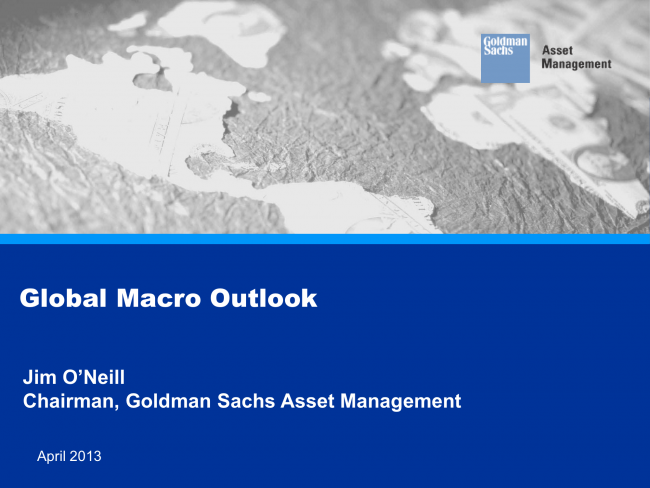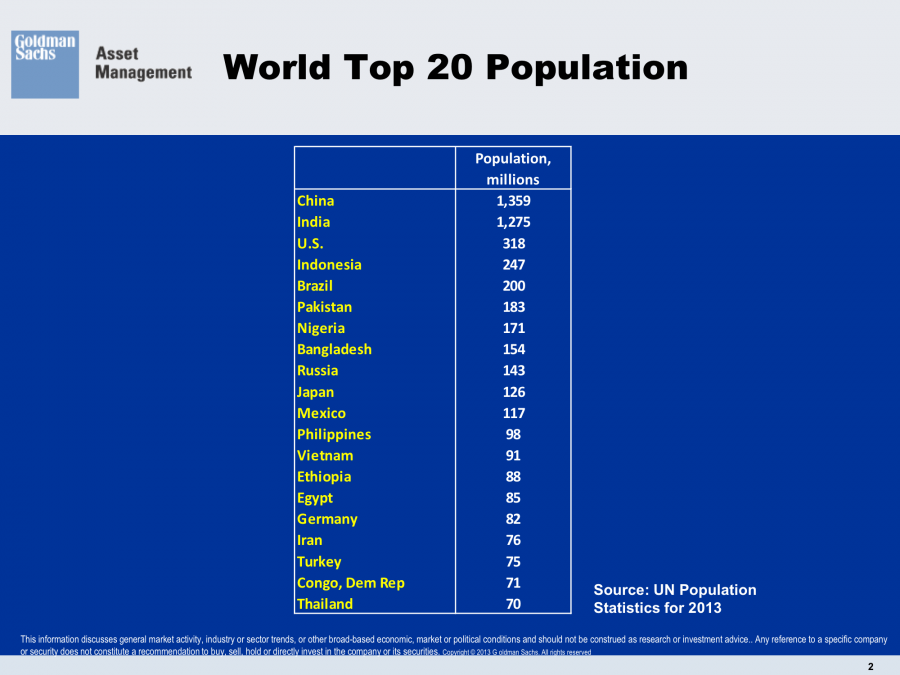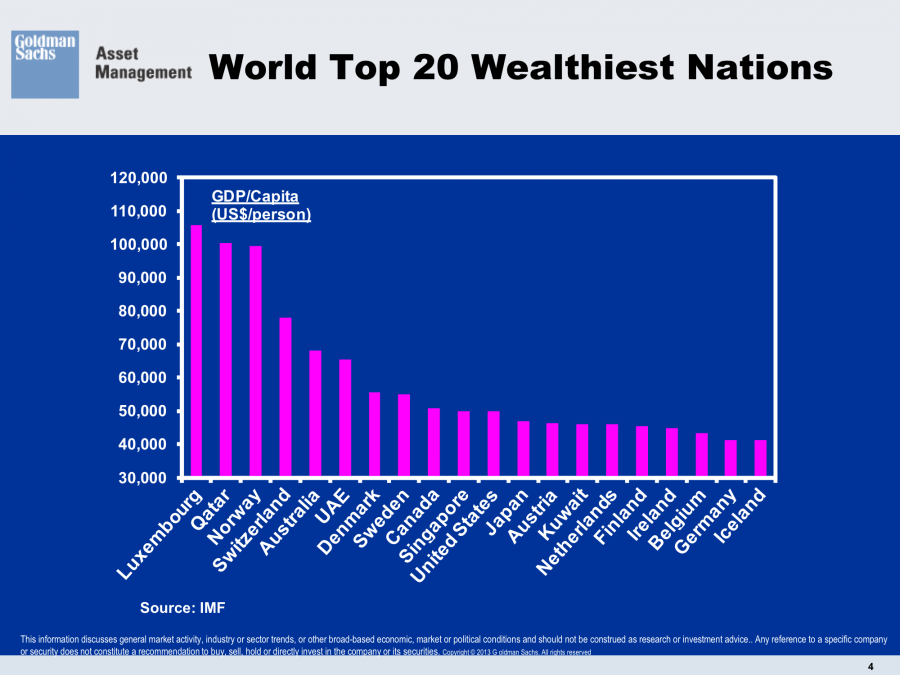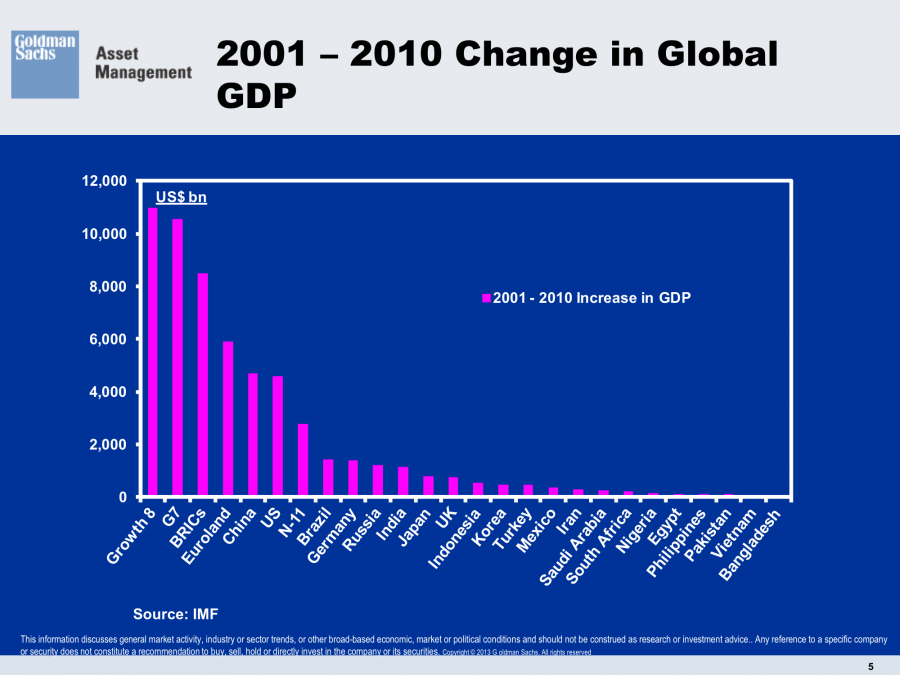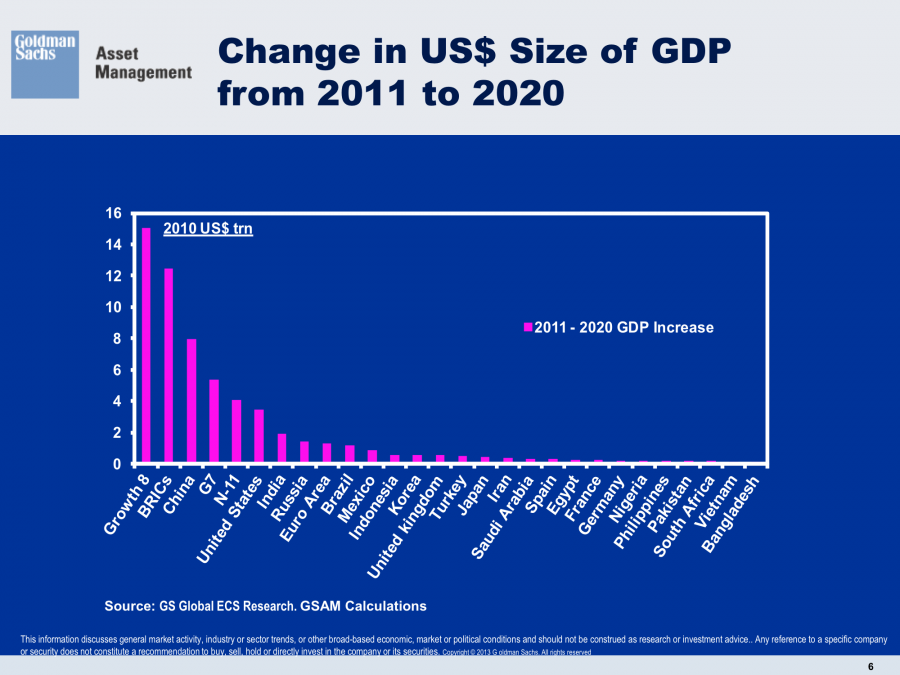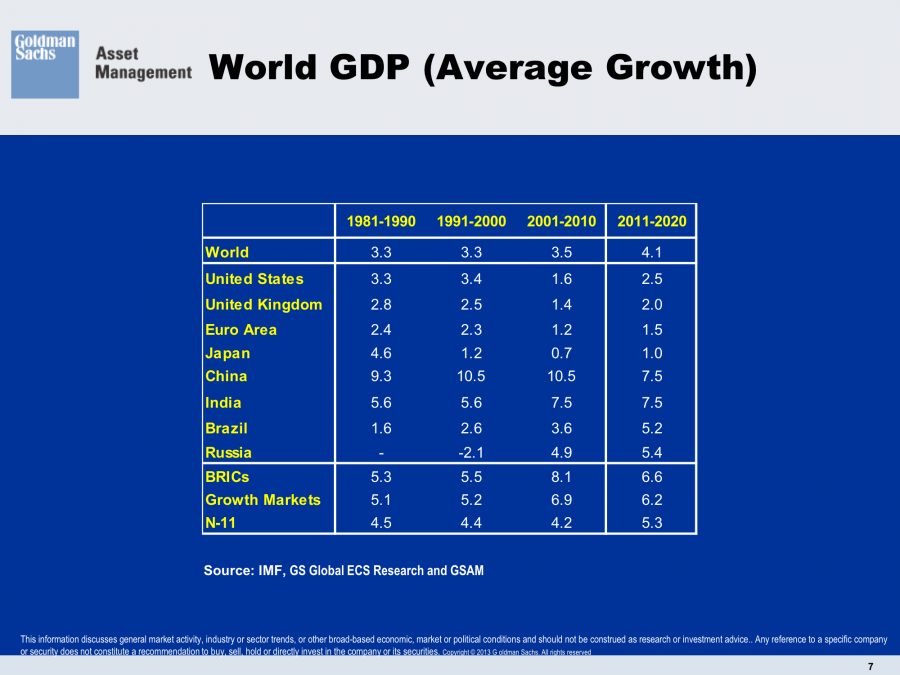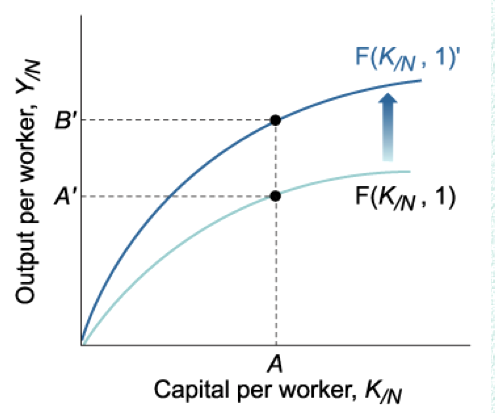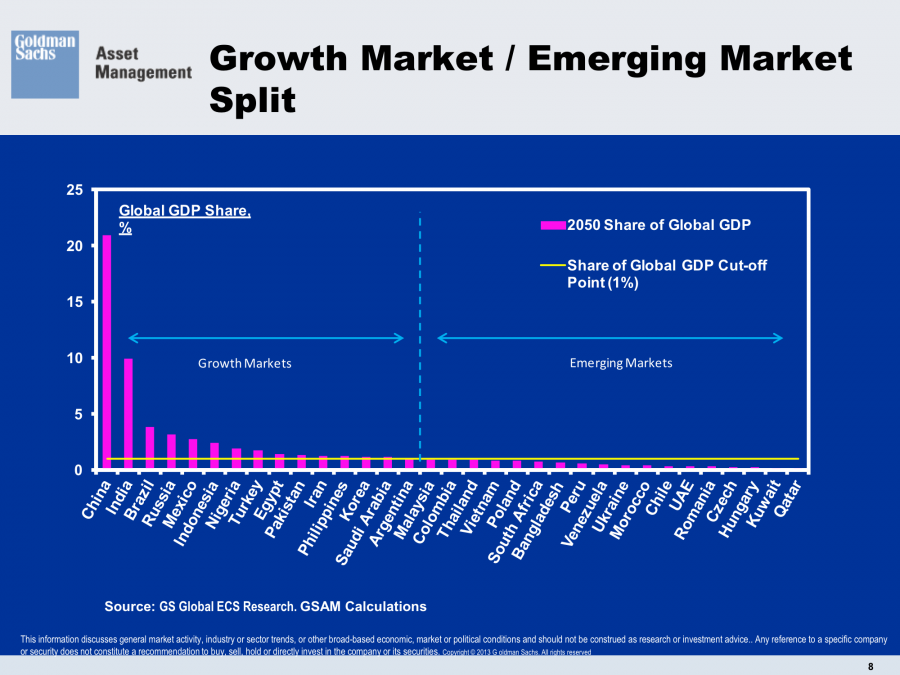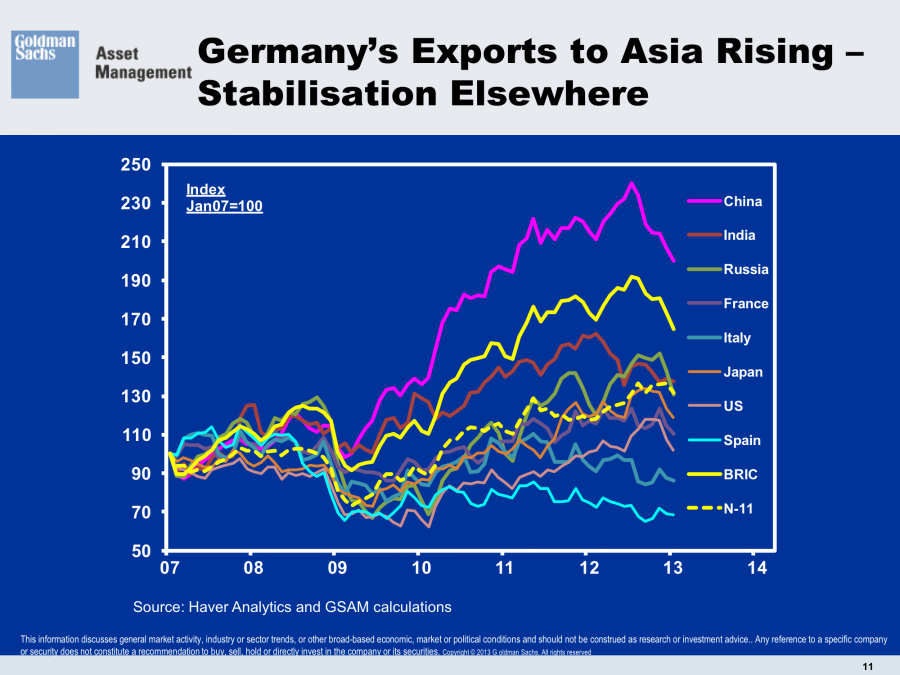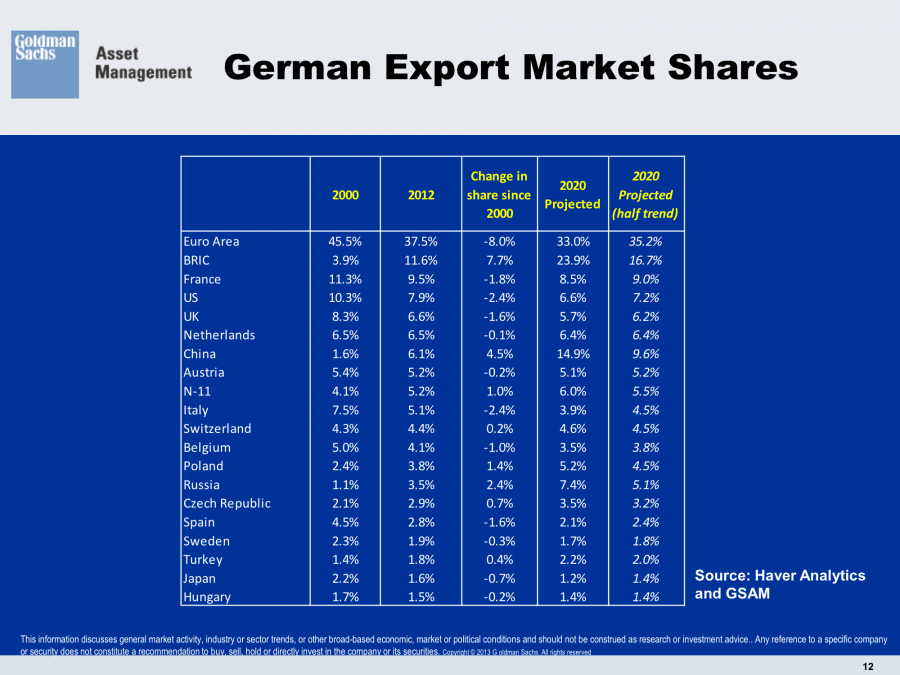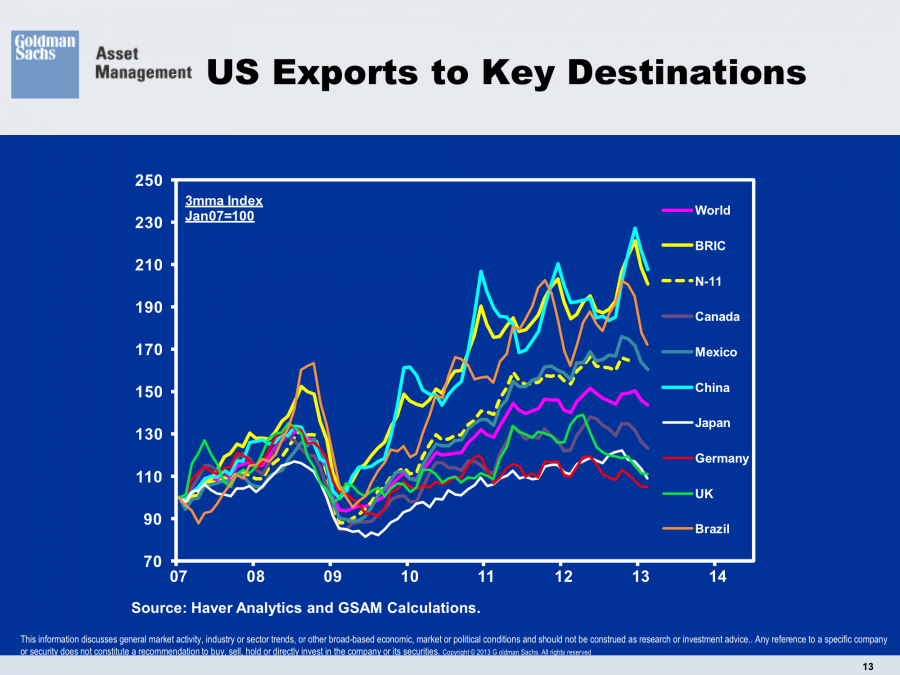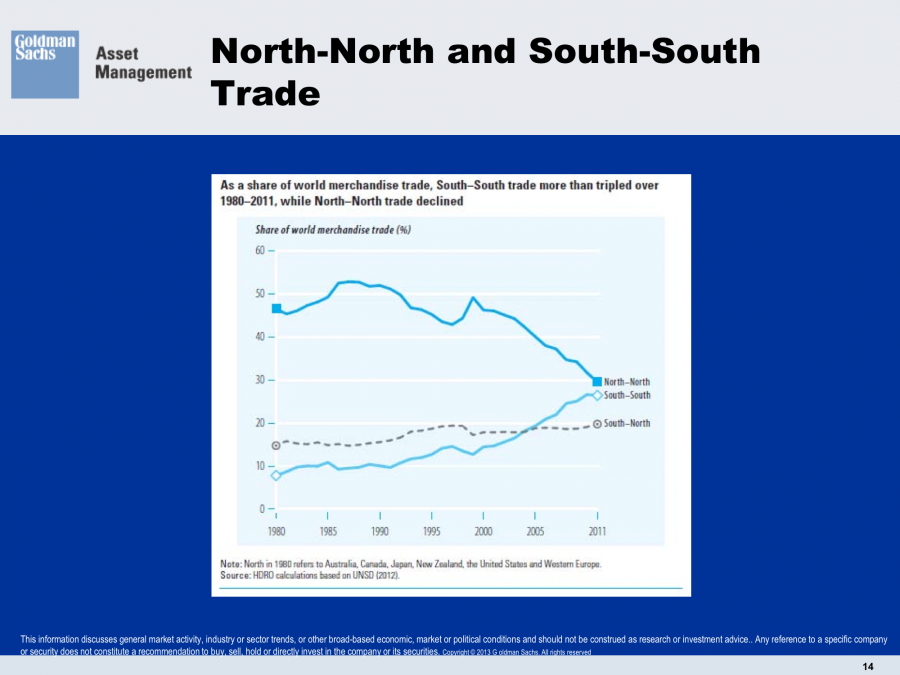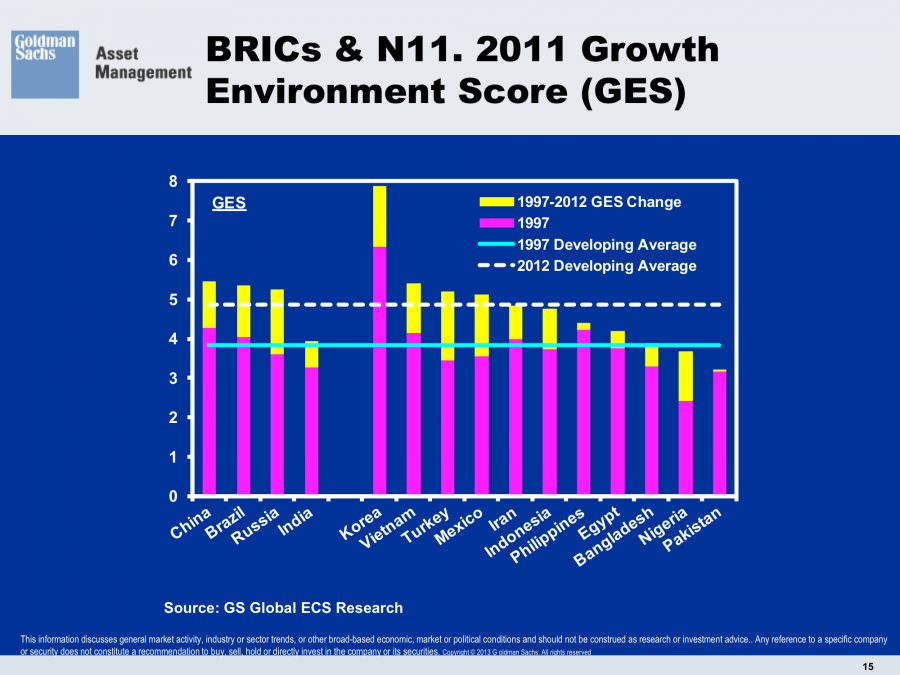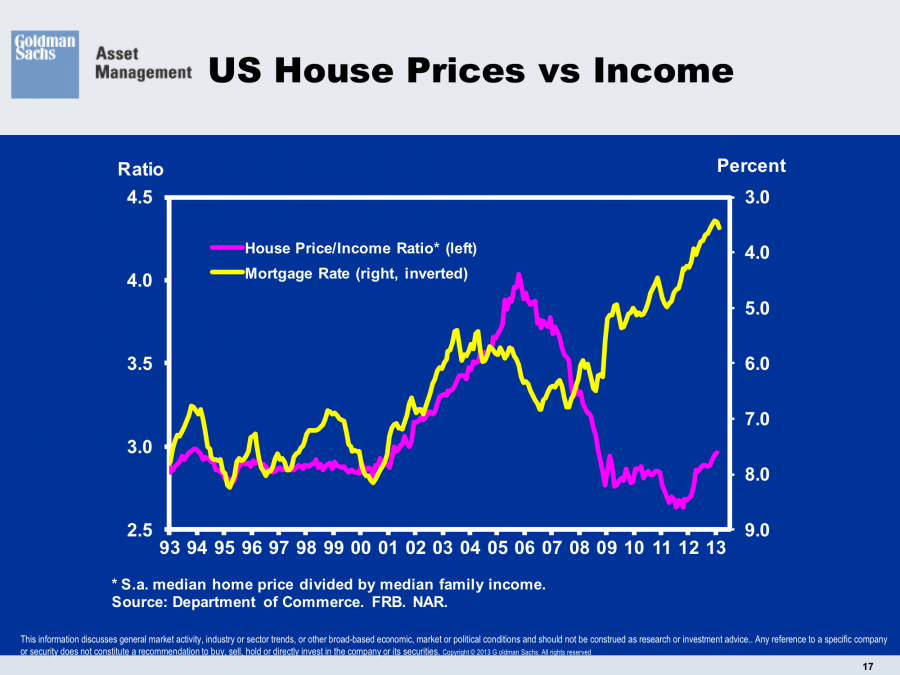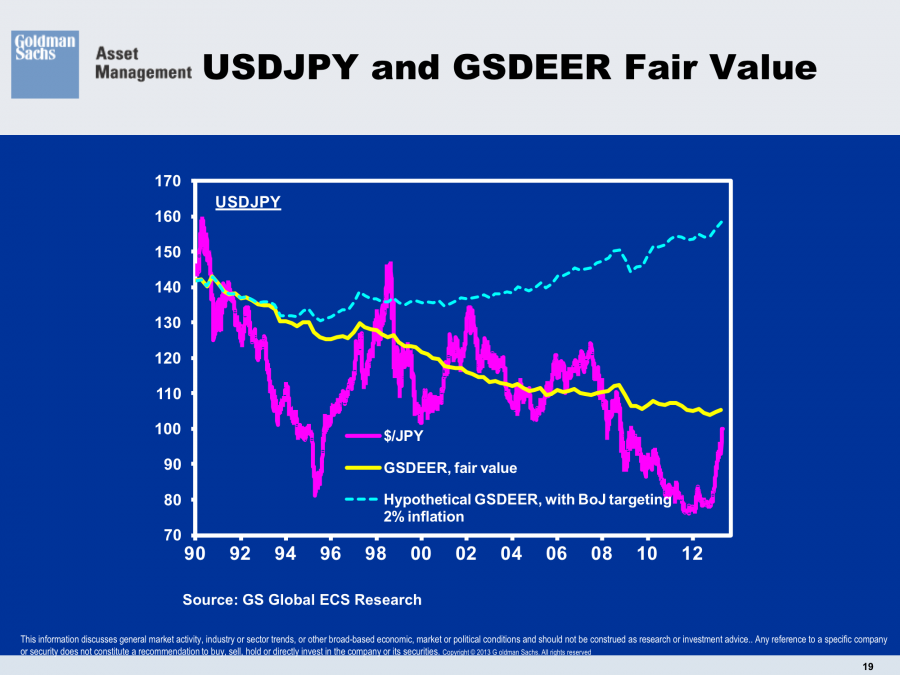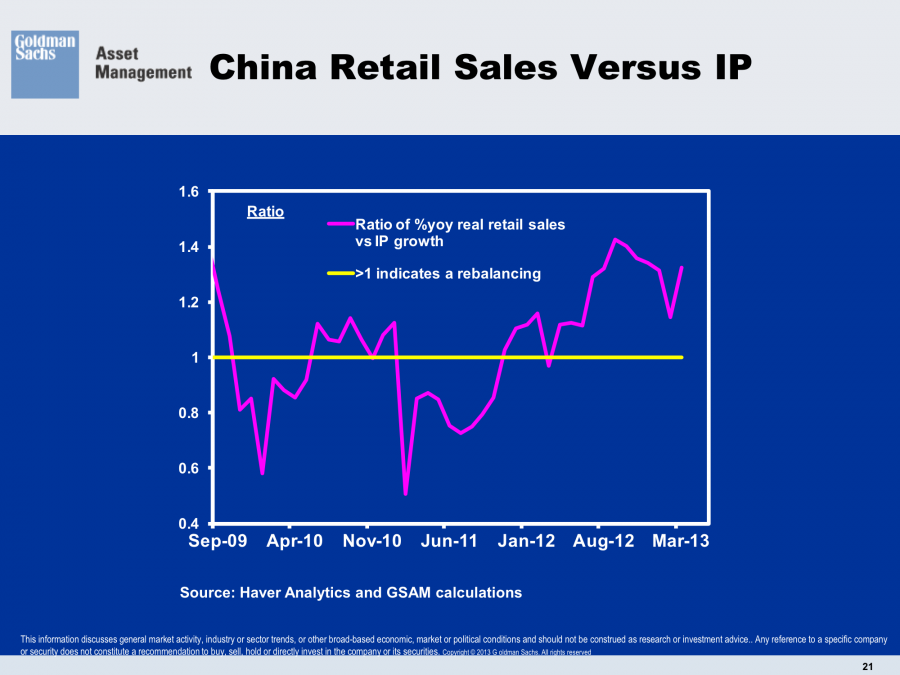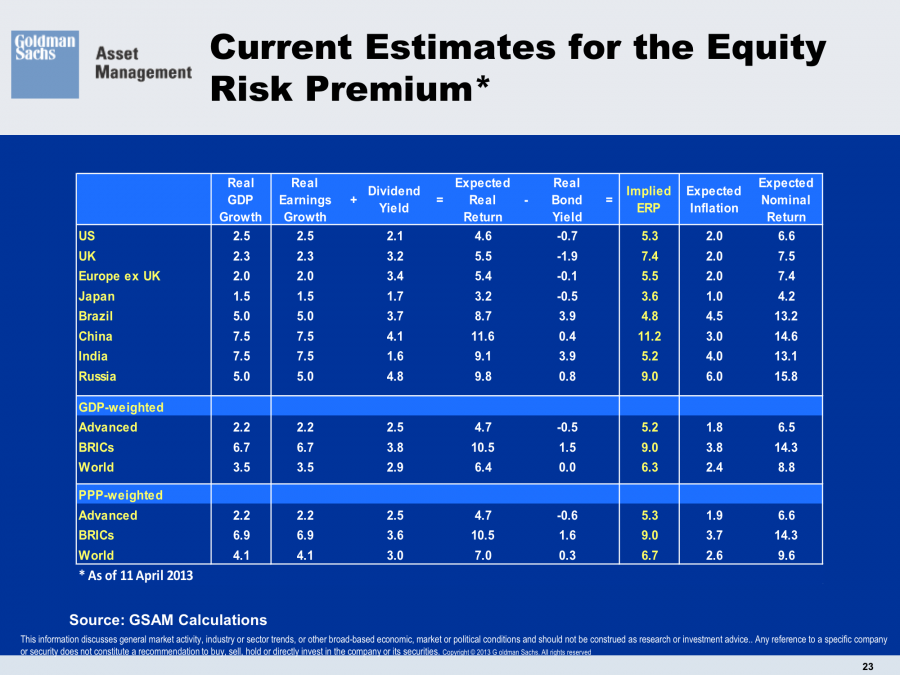George Dorgan
My articles My siteAbout meMy videosMy books
Follow on:LinkedINTwitterSeeking Alpha
CFA SocietyEconomicBlogs
Update December 2013:
Goldman Sachs: Cut your Emerging Markets exposure by a third!
Goldman Sachs Asset Management via Business Insider
“I have chosen to focus on the world,” said Jim O’Neill in his final note as an economist for Goldmans Sachs.
O’Neill, who is famous for coining the acronym BRICs, discusses how the BRICs and other growth markets will continue to be an increasingly important driver of global growth.
“If China grows by 7.5% in this decade, and if the developed world returns close to trend, then the world will grow by around 4%,” he said.
And in this environment, O’Neill argues that the stock market is a great place to be invested.
“Current ERP (equity risk premium) levels continue to indicate that equity markets are still quite attractive in many parts of the world,” he said.
O’Neill provides forecasts for all of the major economies in both the developed and developing worlds.
‘The size of our populations alone does not drive economic growth, but it is a necessity to become big.’
‘Canada, Australia, Spain, South Korea, the Netherlands, Saudi Arabia and Switzerland … are in this list and not the first one.’
Goldman Sachs Asset Management
‘Only three of the most populated countries – the US, Japan and Germany – are currently in the top wealthiest.’
‘The aggregate contribution to nominal GDP in the 2001-2010 decade of the ‘Growth 8’ (the four BRIC nations along with the four so-called MIST that each represent at least 1% of global GDP) was bigger than the aggregate of the G7 in 2010 US-Dollar terms.’
‘In the current decade, 2011-2020, their aggregate contribution will be close to three times that of the G7. The BRIC nations alone will contribute more than double that of the G7, and the aggregate of the N11 will contribute more than the US.’
‘If China grows by 7.5% in this decade, and if the developed world returns close to trend, then the world will grow by around 4%.’
Comment George Dorgan:
“Growth markets” are slowing:
- Higher wages made the BRICS less competitive.
- Lower demand for BRICS exports due to the austerity policy caused by the euro crisis since Summer 2011.
- The nearly 40% depreciation the Japanese yen against the yuan, has weakened Chinese exports. The recovery thanks to weaker Brent oil and other commodity prices should be quite quick.
As opposed to the other four, we believe in China, that continues to be competitive, because it does not allow for quick wage increases. The following picture explains how China replaces the effect of higher wages with more capital and better technology.
Russia, South Africa and partially Brazil have the Dutch disease, they are dependent on high commodity prices. Russia, India, Brazil and South Africa have a wage inflation issue. Outsourcing to India in the IT area might become less and less profitable. By 2020 we do not see any big wage advantages for the BRICS any more. Just China should still be strong. We see more chances for newly emerging markets, i.e. in Africa.
Current account surpluses are moving from Asia to Europe, especially Germany, Sweden, Norway, Finland and Switzerland, the ones that often provide the technology for the Chinese expansion.
India, Indonesia or Brazil already have current account surpluses, things will be more difficult in the upcoming decade, especially when consumption in Europe or the US is restricted.“Russia struggles with high inflation and low GDP growth. 1.7% in 2013 vs. 2.1% in 2012″
“At the headline level, Brazil’s economy has undergone what Nomura economist Tony Volpon calls a “sudden stop”, from 7.5 per cent in 2010, to 2.7 per cent in 2011 and now less than 1 per cent in 2012″. source“As per IMF’s projections, India‘s real economic growth was 11.2 per cent in 2010, 7.7 per cent in 2011 and 4 per cent in the last calender. Indications for FY 2012/2013 are 4.5%.”South Africa (that completed the BRIC states to “BRICS”): “The poll taken during the course of last week saw the median for economic growth unchanged from last month at 2,6% for this year, 3,3% next year and 3,6% in 2015. The most pessimistic view is 2,3% for this year. We believe that there are downside risks to our growth forecast and upside risks to the current account deficit if there is significant strike activity, particularly in the mining sector,” said Peter Worthington, economist at Absa Capital. (A) challenge for fiscal policymakers is the endless waves of disruptive strike action, and the impact this has on GDP growth,” said Colen Garrow, economist at Meganomics. ” source
Goldman Sachs Asset Management:
This shows ‘China and India’s possible huge share of global GDP by 2050 along with each emerging nation whose GDP may represent more than 1% of the world.’
Germany has experienced big shifts in its export markets.
Here’s a closer look at German trade projections.
The US has also seen its mix of trade partners shift in recent years.
‘We took this from the latest United Nations Statistics Division 2013 report and it suggests that trade between the so-called ‘south south’ countries is already approaching that between the so-called ‘north north’.’
This ‘shows the GS Growth Environment Scores (GES), an index used to measure sustainable growth or perhaps a measure of productivity.’
Goldman Sachs Asset Management
Here’s a breakdown of the 18 variables that go into the GES score.
‘Perhaps now things have shifted in such a way that the US is in a position to benefit more than many realise from this changing world.’
Goldman Sachs Asset Management
‘In terms of the US balance of payments, page 18 shows that while far from strong, this changing world is contributing to an improvement in the current account and the broad balance of payments (BBoP).’
China’s balance of payments and current account balance are basically doing the opposite of what they are doing in the US.
This ‘is my regular guide to the relative performance of consumer spending compared to industrial production and is especially important while reasonably encouraging.’
Leading indicators point to lower growth rates than what we’ve recently seen.
‘Current ERP (equity risk premium) levels continue to indicate that equity markets are still quite attractive in many parts of the world.’
Authored by Goldman Sachs Asset Management and commented by George Dorgan
Read More:
No related photos.










